Computer Hardware and Software: Their Implementation in the different institutions in the community
Computer Hardware
Central Processing Unit (CPU)
The central processing unit (CPU), also known as the central processor, main processor, or simply processor, is the primary processor within a computer. It contains electronic circuitry that carries out a computer program's instructions, including arithmetic, logic, control, and input/output (I/O) tasks (Nagpal, 2008; Chesalov, 2023). The image displays the inner workings of a central processing unit, specifically showcasing the integrated circuit of Intel's Xeon 3060, initially manufactured in 2006 (Cole, 2020).
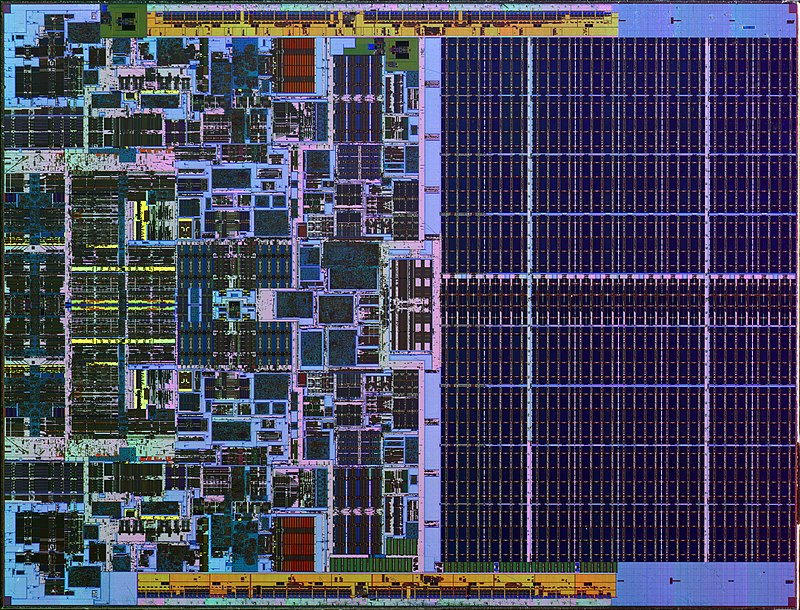
Random Access Memory (RAM)
Random-access memory (RAM) is a type of computer memory that allows data to be read and written in almost equal time, regardless of its physical location within the memory. It is primarily used for storing working data and machine code. RAM is usually volatile, meaning its contents are lost when power is turned off. The two main types of volatile RAM are static RAM (SRAM) and dynamic RAM (DRAM), with DRAM requiring periodic refreshing to maintain stored data (Hornby et al., 2005; Britannica, 2023). The Swissbit 2GB PC2-5300U-555 DDR2 RAM, shown in the image, is an example of writable volatile random-access memory commonly used as main memory in personal computers, workstations, and servers (An-d, 2013).
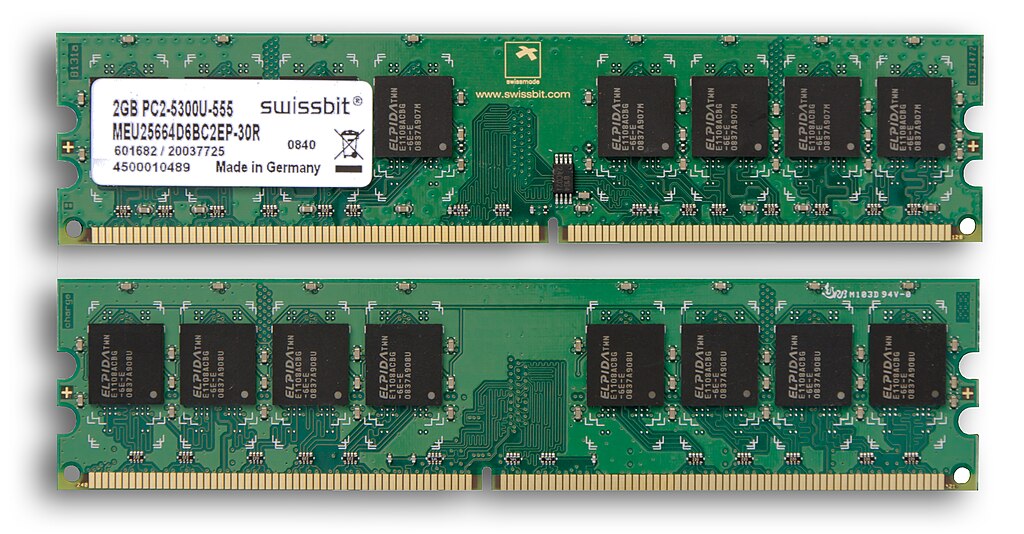
Motherboard
The motherboard is a printed circuit board (PCB) that connects all c omponents of a general-purpose computer, often called the “backbone” or “spine.” It houses the CPU, RAM, expansion cards, and slots for drives and external devices. The motherboard’s base is made of a nonconductive material with copper or aluminum traces forming circuits between components. It also contains the BIOS, which manages hardware initialization, booting, and communication between the OS and external devices. The motherboard evolved from the backplane, which housed individual components before microprocessors (Volle, 2023). The image depicts the Dell Precision T3600 system motherboard, which is commonly used in professional CAD workstations and was manufactured in 2012 (Wieclaw, 2019).
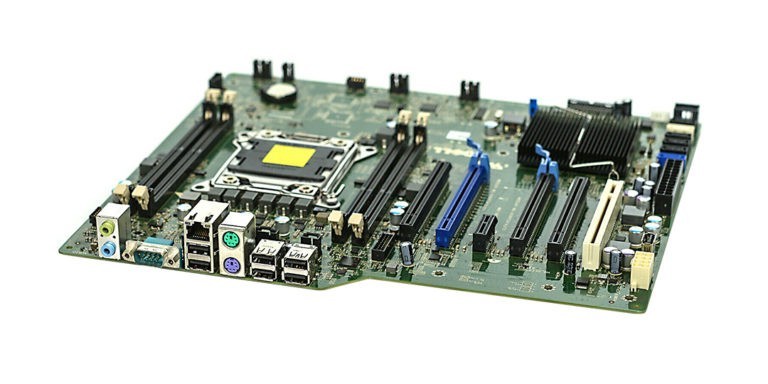
Computer Storage
Computer storage refers to technologies used to retain digital data, essential for processing and retrieval (Patterson & Hennessy, 2005). Auxiliary memory, including magnetic disks, magnetic tapes, and optical discs, provides long-term storage, trading slower access speeds for higher capacity and stability. These devices are nonvolatile, retaining data even when powered off (Hemmendinger, 2024). Magnetic disk drives, such as hard disks, store data with magnetized spots on rotating disks, while magnetic tape is used for archiving but has slower access times. Optical discs, like CDs and DVDs, store data in pits, holding gigabytes of information. Magneto-optical discs combine magnetic and optical technologies for storage (Hemmendinger, 2024). The IBM DJNA-351520 hard disk drive, with a 15 GB storage capacity, was manufactured in 1999 and serves as secondary storage when connected to a computer (Jansky, 2008).
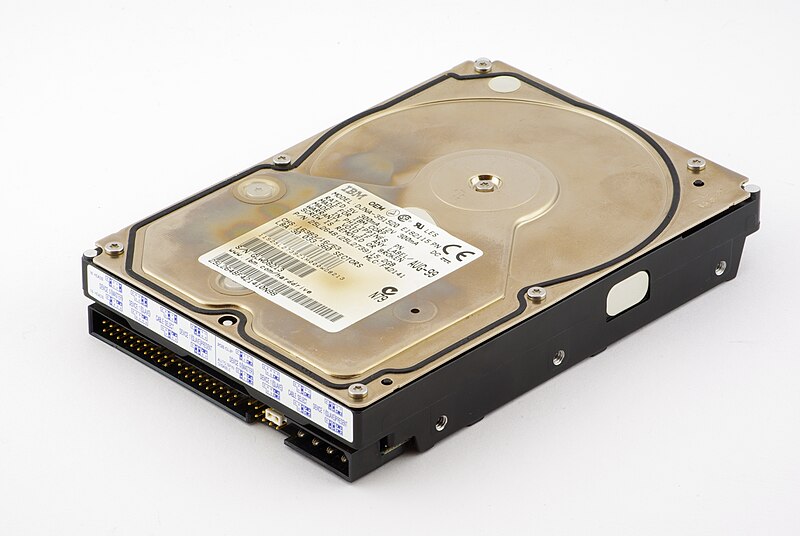
Graphics Card
A graphics card, also known as a video card or GPU, is a computer expansion card that outputs graphics to a display device like a monitor. It includes a graphics processing unit (GPU), which performs the necessary computations for generating graphics. While the GPU is the key component, the term "GPU" is sometimes mistakenly used to refer to the entire graphics card. Graphics cards are distinct from integrated graphics found on motherboards or CPUs (Intel, n.d.). The Sapphire-brand Radeon HD 5570 is a video card designed for computer graphics, featuring a PCI Express 2.1 x16 interface, a core clock speed of 650MHz, and 1GB of DDR3 memory. It supports DirectX 11 and OpenGL 3.2, making it suitable for various graphics-intensive tasks (Amos, 2015).
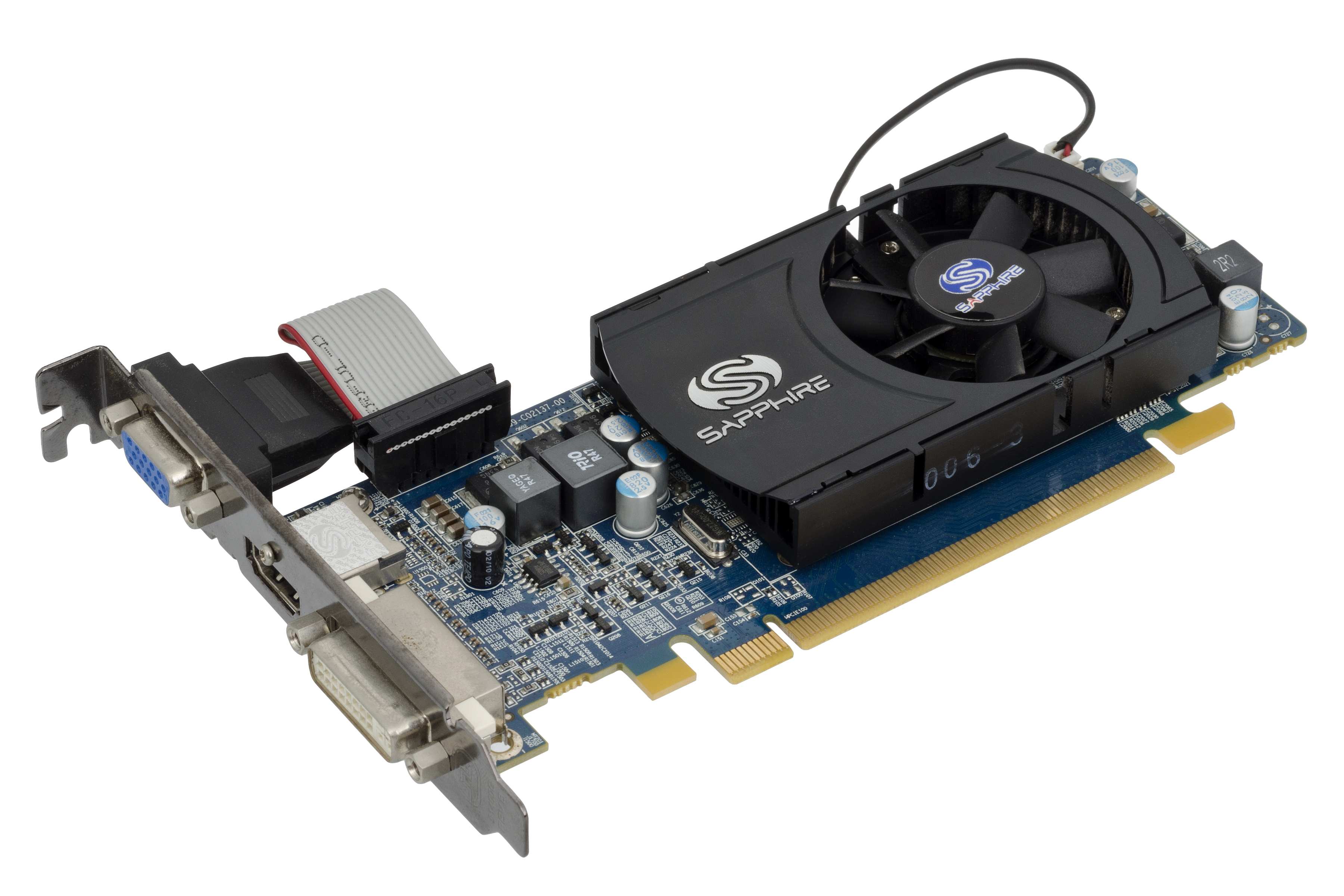
Sound Card
A sound card is an integrated circuit that processes audio signals, converting analog sound into digital data or vice versa. It allows for audio recording and playback on a computer. While many personal computers integrate sound card functions into the motherboard, separate sound cards are available for users seeking higher-quality audio (Britannica, 2021). The Creative Labs Sound Blaster Live! Value (CT4670) is a typical PCI sound card.
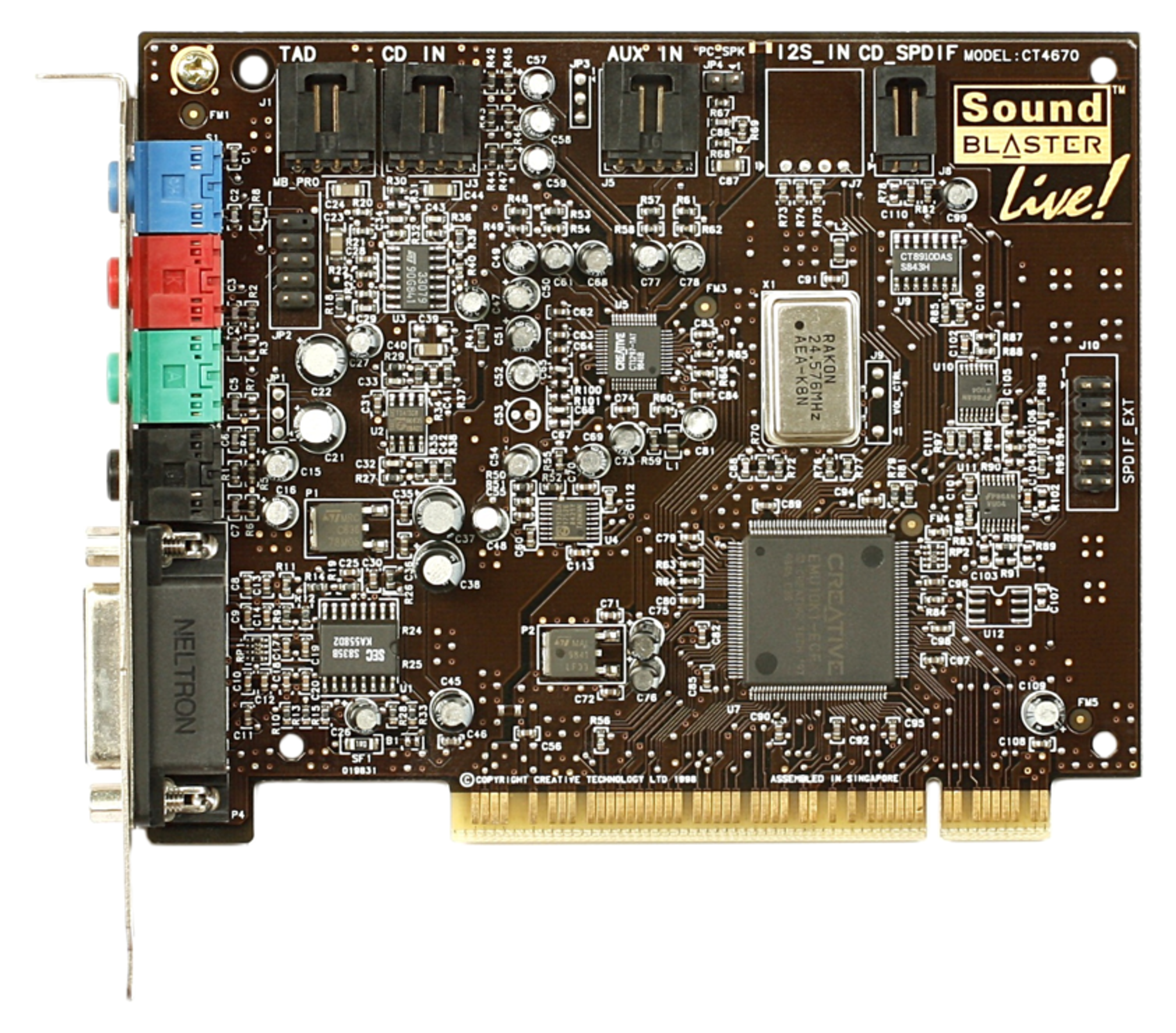
Computer Case
A computer case, also known as a computer chassis, is the enclosure that contains most of the hardware of a personal computer. It is the physical frame or structure of a computer or electronic device that holds and protects the internal components. It is typically made from materials like aluminum, steel, or plastic, depending on the device's requirements. Common chassis designs include tower, desktop, rack-mounted, blade, and open-air, each suited for different u se cases based on factors such as size, power consumption, and heat dissipation (Lenovo, n.d.). The image shows a big tower ATX computer case, a full tower design that includes accessories such as a fan controller, a DVD burner, and a USB memory card reader (Makeev, 2010).
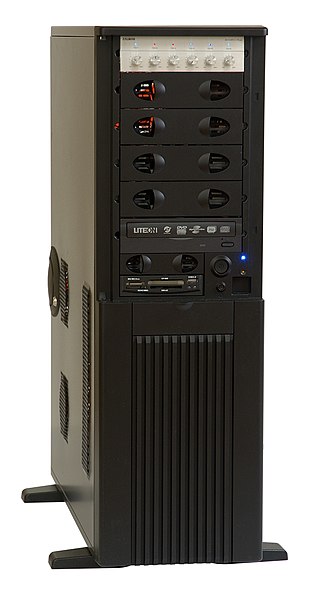
Peripheral Devices
Peripheral devices are external components that allow a computer to receive data (input) and send data (output). Input devices, like keyboards and mice, convert user actions into data the computer can process. Output devices, such as monitors, printers, and speakers, turn processed data into a format the user can understand. Some devices, like USB drives and smartphones, serve both functions. These devices connect to the computer throug h various interfaces, such as USB, and play a crucial role in computer systems by enabling interaction with users and other devices (Britannica, 2024). The image shows a wired computer keyboard for desktop use, manufactured by Lenovo (Raysonho, 2015).
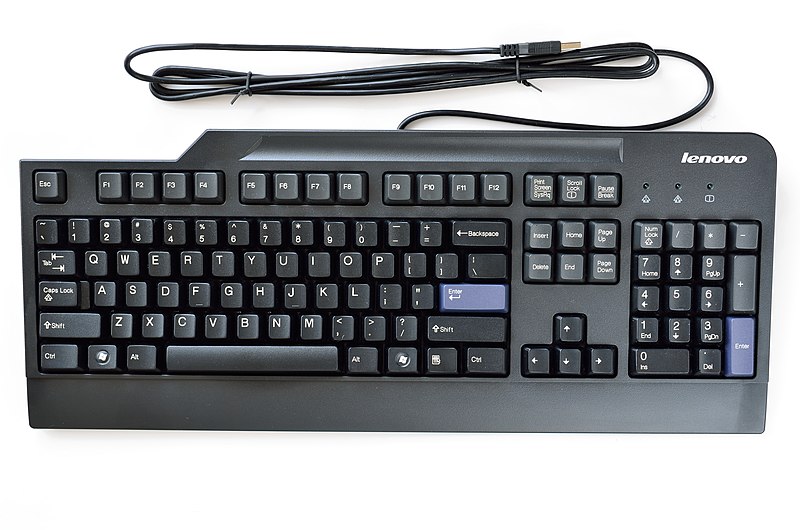
Software
System Software
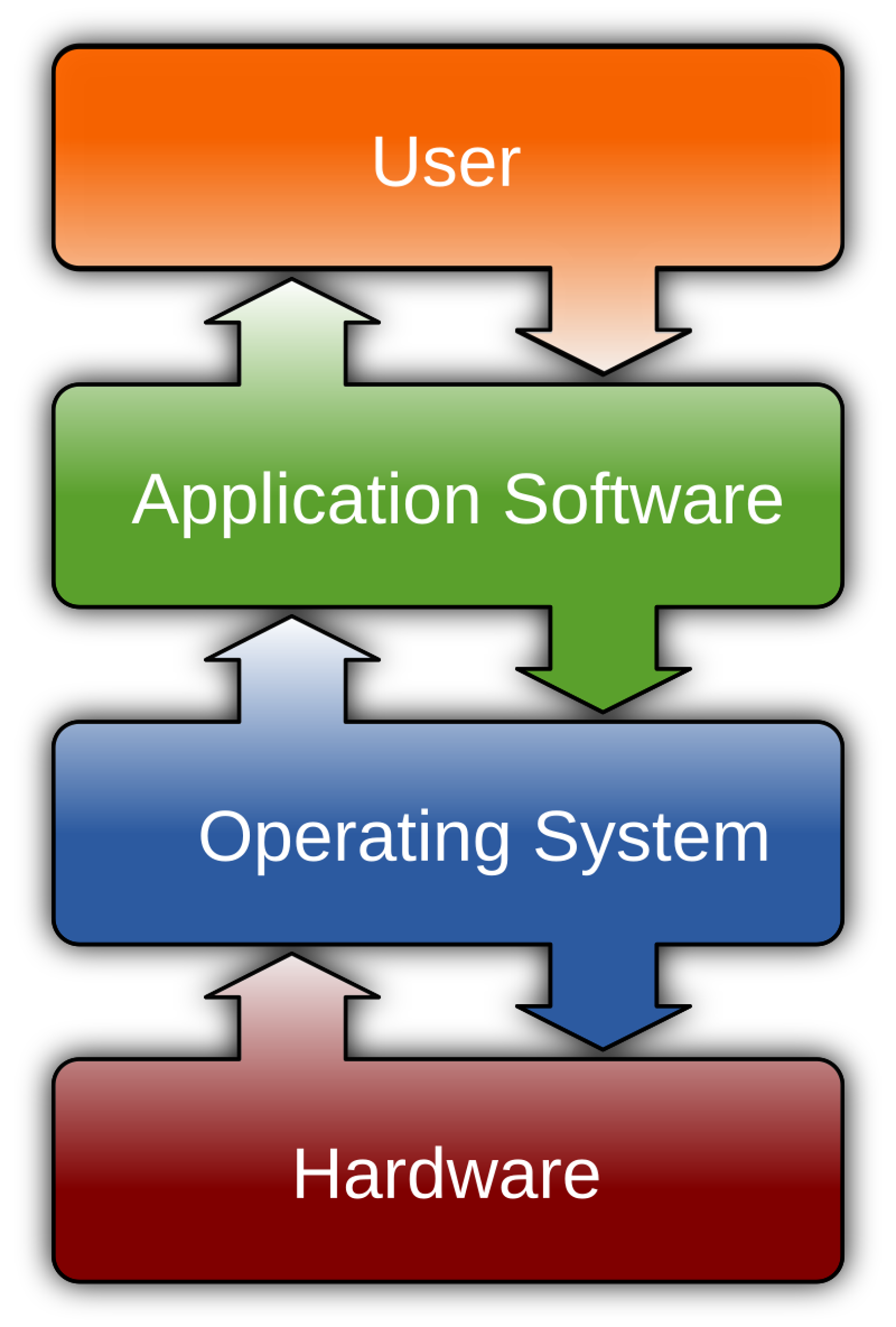
Operating System (OS)
Device Driver
Basic Input/Output System (BIOS)
The Basic Input/Output System (BIOS) is a computer program typically stored in EPROM (erasable programmable read-only memory) that performs essential start-up procedures when the computer is powered on. It checks the availability of peripheral devices (such as keyboard, mouse, disk drives, printers, and video cards) and loads the operating system into the computer's main memory. Once the operating system is loaded, BIOS manages data flow between the OS and the peripherals, allowing the OS and applications to operate without needing to understand the hardware details. In the early 21st century, BIOS was largely replaced by the Unified Extensible Firmware Interface (UEFI), which offers faster operation and the ability to handle larger drives (Britannica, 2024). The image visualizes the legacy BIOS boot process using a block diagram (Ruwan, 2020).

Application Software
Application software is designed to carry out specific tasks for users by directing the computer to execute commands provided by the user. This type of software includes programs like word processors, spreadsheets, database management systems, and various other applications for data processing (Britannica, 2024).
Their implementation in the different institutions in the community
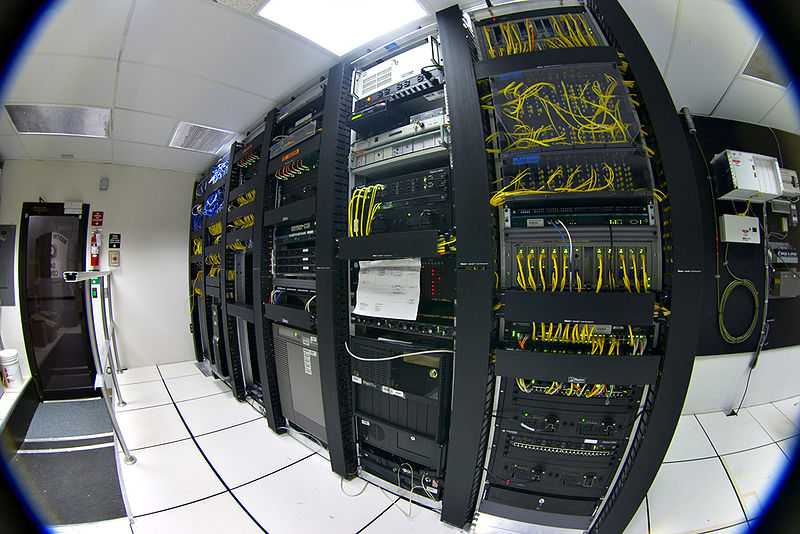
For computers to function, both hardware and software are essential: hardware defines a computer's capabilities, while software provides the instructions for tasks (Britannica, 2021). Software is implemented across various institutions in the community to improve productivity, efficiency, and service delivery. Office software applications, like Microsoft Office and Google Workspace, are used in schools, businesses, and government offices for document creation and communication. Productivity software, including project management and collaboration tools, supports efficient task completion and is commonly used in workplaces. Utility software, such as antivirus and backup tools, optimizes computer performance across institutions. Enterprise systems automate business processes, aiding decision-making and data management in corporate settings. Mobile applications provide access to services and information on the go, benefiting both businesses and consumers in the community (Wood, 2024).
Analysis/Reaction
As a computer science student, understanding how hardware and software work together is essential for me to fully appreciate the functionality and design of computer systems. Hardware refers to the physical components of a computer, like the CPU, RAM, storage, and peripherals, while software includes the operating systems, applications, and utilities that give these components purpose. Learning about both hardware and software—and seeing how they’re used in various institutions, like offices using productivity software, schools relying on educational tools, or data centers managing large-scale storage—shows how essential both are in our daily lives.
One significant aspect I find intriguing is how hardware and software are applied in everyday technology we rely on, from computers, smartphones, and laptops to medical devices and transportation systems. Each device combines various hardware components, like processors and memory, with software that directs these components to perform specific functions. For example, a smartphone’s hardware, such as its camera and sensors, works with specialized software applications to process images, manage data, and run efficiently. Recognizing how these pieces come together to create devices we use daily helps me understand how essential it is to choose the right hardware and software for each specific function.
The concept of hardware-software co-design also stands out to me. This approach involves creating hardware and software to work together seamlessly from the beginning, optimizing performance and making systems more effective. Embedded systems are a great example of this, seen in devices like home appliances, medical equipment, and even smart cars, where hardware and software function as a unified system to complete specific tasks. In a medical device, for example, precise software guides the hardware to monitor vital signs or deliver medication at controlled rates, highlighting the importance of this balance in critical applications.
References
Amos, E. (2015, April 19). Sapphire Radeon HD 5570 video card . Own work.
An-d. (2013, July 12). Swissbit 2GB PC2-5300U-555 DDR2 RAM [Photograph]. Own work.
Britannica, T. Editors of Encyclopaedia (2021, June 29). hardware. Encyclopedia Britannica. https://www.britannica.com/technology/hardware-computing
Britannica, T. Editors of Encyclopaedia (2024, June 14). peripheral device. Encyclopedia Britannica. https://www.britannica.com/technology/input-output-device
Britannica, T. Editors of Encyclopaedia. (2021, July 21). Sound card. Encyclopedia Britannica. https://www.britannica.com/technology/sound-card
Britannica, T. Editors of Encyclopaedia. (2023, July 7). RAM. Encyclopedia Britannica. https://www.britannica.com/technology/RAM-computing
Britannica, T. Editors of Encyclopaedia. (2024, October 25). Software. Encyclopedia Britannica. https://www.britannica.com/technology/software
Britannica, T. Editors of Encyclopaedia. (2024, September 23). Application software. Encyclopedia Britannica. https://www.britannica.com/technology/application-software
Chesalov, A. (2023). The fourth industrial revolution glossarium: Over 1500 of the hottest terms you will use to create the future (ebook). ЛитРес.
Cole, L. (2020, June 6). Intel Xeon 3060 Conroe (Reshoot) [Photograph]. Flickr.
Gilster, R. (2001). PC hardware: A beginner’s guide. Osborne.
Hornby, A. S., Wehmeier, S., & Ashby, M. (2005). Oxford advanced learner's dictionary of current English. Oxford University Press.
Intel. (n.d.). What is a GPU? graphics processing units defined. https://www.intel.com/content/www/us/en/products/docs/processors/what-is-a-gpu.html
Lenovo. (n.d.). Can I upgrade my chassis?: Why is the chassis important in a computer?. Can I upgrade my Chassis? | Why is the Chassis important in a computer? | Lenovo US. https://www.lenovo.com/us/en/glossary/chassis/
Maxwell, G. (2004). Telecommunications equipment in one corner of a small data center [Photograph]. Wikimedia Commons. https://commons.wikimedia.org/wiki/File:Racks_of_telecommunications_equipment_in_part_of_a_data_center.jpg
Nagpal, D. P. (2008). Computer Fundamentals: Comcepts, systems, applications. S. Chand & Co.
Patterson, D. A., & Hennessy, J. L. (2005). Computer organization and design: The hardware/software interface (3rd ed.). Morgan Kaufmann Publishers.
Raysonho @ Open Grid Scheduler / Grid Engine. (2015, May 3). A Lenovo Keyboard. Own work.
Ruwan, A. (2020, December 24). Legacy BIOS boot process. Wikimedia Commons. https://commons.wikimedia.org/wiki/File:Legacy_BIOS_boot_process.png
Stair, R. M., & Reynolds, G. W. (2003). Principles of Information Systems (Sixth Edition). Course Technology.
Volle, A. (2023, April 21). motherboard. Encyclopedia Britannica. https://www.britannica.com/technology/motherboard
Wood, R. (2024, April 1). Computer hardware, software, and Networks. Introduction to Information Systems Management. https://open.ocolearnok.org/informationsystems/chapter/chapter-2-computer-hardware-software-and-networks/
Wyborn, A. (2024, February 6). Hardware vs software implementation: What’s the difference? Ubique Digital Solutions. https://ubiquedigitalsolutions.com/blog/hardware-vs-software-implementation-whats-the-difference/